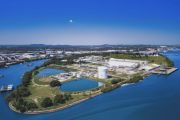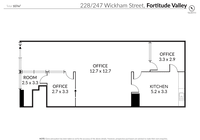
Luxury retreats boom as cashed-up tourists pay for the vibe
Luxury retreats in remote settings, where a single night can cost $2000 or more, have become the best performing sector of the entire hotel market, with cashed-up tourists more willing to spend big on high-end experiences, close to nature.
A boutique sector of luxury lodges has emerged to cater for the expensive tastes of affluent travellers. Among them are Bedarra Island on the Great Barrier Reef, Saffire Freycinet in Tasmania, Longitude 131° in the Uluru-Kata Tjuta National Park and Huka Lodge in New Zealand.

Michael Crawford is the chief executive of luxury accommodation group Baillie Lodges which has six top-end resorts in Australia and New Zealand. A single night’s stay can cost as much as $5000 in a Baillie retreat. He said travellers were expecting a lot more, especially curated experiences that were more exclusive and personalised to their needs.
“There is a much higher demand now than ever before for that expectation of creating a more curated, emotional connection to the places that you’re visiting,” Crawford told The Australian Financial Review. “They’re looking for privacy and they’re looking for opportunities for their family or close friends to gather.
“Going from just a standardised room product to a suite product to an owners’ kind of retreat, if you will, that allows for smaller group gathers and places for them to be intimate, to share those experiences with themselves.”
Analysis by CBRE of seven lodges in Australia and New Zealand shows total revenue per occupied room has increased 59 per cent from September 2018 to 2024, with margins up 54 per cent. Total visitor expenditure is also up 7 per cent since September 2019, from $45.2 billion to $48.4 billion.
Driving the growth in luxury lodges is the rise in the number of high-net worth individuals travelling the globe, on the hunt for more personalised, private holidays with a focus on nature.
The number of wealthy individuals around the world with more than $US10 million ($15.43 million) rose by 4.4 per cent in 2024, and is expected to increase by 6.9 per cent by 2028, according to separate research by Knight Frank.
Meanwhile, tourism more broadly has jumped. Australia welcomed almost 8 million tourists in the 2024 financial year – up 36 per cent year-on-year. Tourists from the United States are the top contributors to visitor holiday spending ($2.3 billion), followed by China ($1.8 billion) and the United Kingdom ($1.7 billion) at the end of last year.
Katya Ezhova, research analyst at CBRE, said there had been a marked and consistent increase in global wealth, highlighted by the rising number of millionaires, which was increasing demand for high-end travel experiences.
“Combined with travellers’ increasing appetite for unique and personalised experiences, as well as a shift towards wellness and sustainable travel, is propelling demand for luxury travel,” Ezhova said.
“Affluent travellers are placing greater emphasis on safety and exclusivity, opting to explore lesser-known, emerging destinations and engaging in slower, more immersive travel experiences.”

Luxury travellers are opting to take longer, more immersive experiences that provide opportunities for personal growth, cultural enrichment or wellness benefits, as opposed to frequent, shorter trips.
“This shift in luxury travel definitely has a transformative influence on hotel development and upgrading, and this momentum is expected to accelerate,” Ezhova said.
“New luxury lodge designs and renovations are increasingly focused on creating unique experiences, incorporating elements like local art, nature-first architecture and design that tells a story and blends seamlessly with the surrounding.”
Privacy is also being put at a premium by wealthier travellers, as opposed to “mass luxury”.
“The smaller, more intimate environments that we’re creating allow us to get a level of privacy for guests; private dining, private touring, intimate massage or spa treatments, are really important, I think, to the luxury experiential traveller now,” Baillie Lodges’ Crawford said.
Guests of Baillie Lodges’ Longitude 131 Resort in Yulara, Northern Territory, can take part in a private tour of the UNESCO World Heritage-listed Uluru-Kata Tjuta National Park by camel or car, or can book a small charter plane flight over Uluru. Travellers can also join a two- to four-night “walkabout” itinerary around the national park.
Service delivery matures
Global travel and leisure investment firm KSL Capital partnered with Baillie Lodges in 2018, and is understood to have valued its luxury hotel portfolio at more than $100 million at the time.
Dean Dransfield, a long-time transactions and development adviser to hoteliers, said before COVID-19 Australian travellers and tourist had not given much regard to luxury accommodation locally. But more hotels had since upgraded and there had been maturity in service delivery, he said.
“We got a lot better at creating itineraries of things to do at these retreat destinations and one of the core things, of course, was food and beverage,” Dransfield told the Financial Review. “But on top of that, other things to do, whether it be fishing, exotic bushwalking, etcetera.
“There was just a real moment in time where quality was more likely to be rewarded, and therefore people put a lot more effort into delivering it. At the same time, there was considerable wealth being generated in a smaller proportion of the population.”











